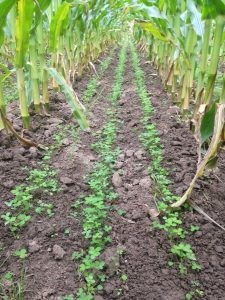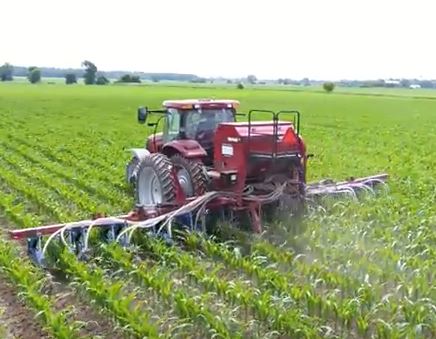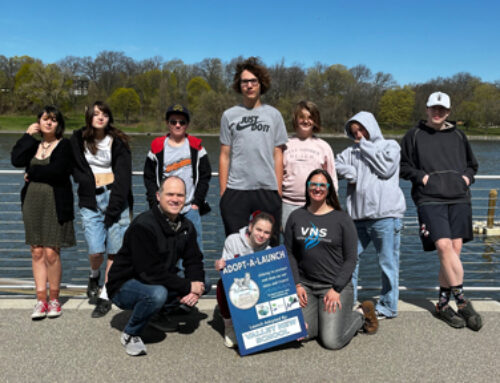Interseeding is the method of planting a cover crop into a primary crop where the primary crop is still growing. The goal of this method is to establish cover crops earlier in the growing season, giving the cover crops a head start in order to help improve soil health. Water quality is also improved as the cover crops will help reduce erosion and nutrient loss due to surface water runoff.
Corn silage and corn grain crops at a growth stage range of V3 t V7 (3 – 7 fully developed leaves) provides the perfect window of opportunity to utilize interseeding of cover crops. Planting the cover crop prior to canopy closure allows the cover crop to become established enough to where it can become dormant and not interfere will corn growth.
As the corn crop starts to naturally dry down and mature, more sunlight will penetrate into the lower canopy, bringing the cover crop out of its dormant state. After harvest of the corn crop is completed, the cover crop will continue growing at a faster pace.
The photo to the right (courtesy of UW – Extension) shows how cover crops can germinate between the 30 inch corn rows.
The cutom interseeder shown in the photo above consists of a 12 row cultivator toolbar with a Valmar air seeder that is plumbed to Interseeder Technologies no-till planter units. To see a live action video of this interseeder being used, CLICK HERE.
Equipment funding from The Nature Conservancy helped make it possible for Outagamie County to bring this planting opportunity to the Plum and Kankapot Creek watersheds.

Planting cover crops by interseeding has multiple advantages. Wisonsin’s fall growing season after harvest can be short, especially after soybeans or corn grain. Earlier establishment of cover crops via interseeding can correct this and additional time constraints during the busy fall harvest season. Interseeding also provides the opportunity for low disturbance manure injection after the cover crop becomes established. It also creates opportunities for livestock grazing after fall harvest. This method of planting allows the use of legume covers which can fix nitrogen for the following years crop. Interseeding also has the potential to achieve more cover crop growth than cover crops planted after harvest. Cover crops planted by interseeding can also be planted at the same time and in conjunction with a sidedress nitrogen application.
Cover crops that have proven to be successful in this region include annual ryegrass, red clover and crimson clover. Producers in the area are currently experimenting with additional cover crop plantings such as winter rye, crown vetch, barley, radishes and other species.

Article written by Tyler Bushmaker, CCA
Agronomist/Conservation Planner
Outagamie County Land Conservation Department
Posted by: Chad VandenLangenberg (Chad@fwwa.org)
Fox-Wolf Watershed Alliance






